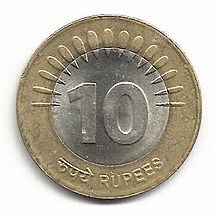
“You don’t get bored writing about bad loans of public sector banks?” asked a friend, a few days back.
We honestly told them, we don’t, simply because new details keep coming out, and we keep writing about them. And most of these new details show how messy the situation has become.
Yesterday, while digging through the questions raised by MPs in the Rajya Sabha, we came across another interesting data point, which again shows how messy the bad loans problem of public sector banks actually is and why it is not going to end anytime soon, irrespective of what analysts and politicians have to say about it.
Bad loans are essentially loans which have not been repaid for a period of 90 days or more.
After a point banks need to write-off bad loans. These are loans which banks are having a difficult time to recover.
When banks write-off bad loans, the total bad loans of the banks come down. At the same time, these bad loans are written-off against the operating profits of banks.
In an answer to a question raised in the Rajya Sabha, the government gave out the details of the total amount of bad loans which have been written off by public sector banks, over the last few years.
Take a look at Table 1:
Table 1:
| Year | Loans written off (in Rs Crore) |
| 2014-2015 | 49,018.00 |
| 2015-2016 | 57,585.00 |
| 2016-2017 | 81,683.00 |
| 2017-2018* | 84,272.00 |
| Total | 2,72,558.00 |
| * Up to December 31, 2017 | |
Source: RAJYA SABHA
UNSTARRED QUESTION NO: 3600
TO BE ANSWERED ON THE 27th MARCH, 2018
Table 1 tells us that between April 1, 2014 and December 31, 2017, the public sector banks wrote off loans worth Rs 2,72,558 crore. Hence, the profits of the bank have been impacted to that extent and so have the dividends that these banks give to the government every year.
Nevertheless, this is a point that we have made in the past. In this column, we hope to make a new point. While the loans that are written off are those that are deemed to be difficult to recover, there is still a certain chance that these loans may be recovered by the bank (given that loans are made against a collateral). How do the numbers stack up on this front? Take a look at Table 2.
Table 2:
| Year | Loans recovered(in Rs Crore) |
| 2014-2015 | 5,461.00 |
| 2015-2016 | 8,096.00 |
| 2016-2017 | 8,680.00 |
| 2017-2018* | 7,106.00 |
| Total | 29,343.00 |
| * Up to December 31, 2017 | |
| Source: RAJYA SABHA UNSTARRED QUESTION NO: 3600 TO BE ANSWERED ON THE 27th MARCH, 2018 | |
From Table 1 and Table 2 we can conclude that over the last four years, Rs 29,343 crore of the bad loans that have been written off (Rs 2,72,558 crore) have been recovered by public sector banks. This basically means that the rate of recovery is 10.8%. Or 89.2% of the bad loans which are written off are not recovered.
Hence, technically there might be a difference between a write off and a waive off, but in real life, there isn’t. A write off is as good as a waive off with the banks failing to recover a bulk of the bad loans. Also, in case of a waive off, the government compensates banks to that extent.
As we have mentioned in the past, loans to industry amount to 73% of the overall bad loans of public sector banks, whereas loans to the services sector amounts to another 13%. This basically means that corporates are responsible for more than 80% of bad loans of banks. And this explains why public sector banks have a tough time trying to recovering the bad loans they have written off.
A bulk of these bad loans are because of corporates who have access to the best lawyers as well as politicians and banks find it difficult to recover these bad loans by selling the collateral against which these loans have been made.
While, public sector banks have written off loans worth Rs 2,72,558 crore over the last four years, the total bad loans outstanding of public sector banks stood at Rs Rs. 7,77,280 crore, as of December 31, 2017. So, public sector banks aren’t done writing off bad loans as yet. There is more to come.
Stay tuned!
The column was originally published on Equitymaster on April 3, 2018.


 Other than having too many rates of tax, India also has one of the highest GST rates in the world. As the World Bank pointed out: “Comparing the design of India’s GST system with those prevailing internationally, we note that the tax rates in the Indian GST system are among the highest in the world. The highest GST rate in India, while only applying to a subset of goods and services traded, is 28 percent, which is the second highest among a sample of 115 countries which have a GST (VAT) system and for which data is available.”
Other than having too many rates of tax, India also has one of the highest GST rates in the world. As the World Bank pointed out: “Comparing the design of India’s GST system with those prevailing internationally, we note that the tax rates in the Indian GST system are among the highest in the world. The highest GST rate in India, while only applying to a subset of goods and services traded, is 28 percent, which is the second highest among a sample of 115 countries which have a GST (VAT) system and for which data is available.” Basically, there are too many design issues with India’s GST, making the system essentially complicated for people to follow. To this criticism, people have pointed out that the earlier system of multiple tax rates with no input credit was even more complicated. This is true. But people making this criticism do not get two points.
Basically, there are too many design issues with India’s GST, making the system essentially complicated for people to follow. To this criticism, people have pointed out that the earlier system of multiple tax rates with no input credit was even more complicated. This is true. But people making this criticism do not get two points.